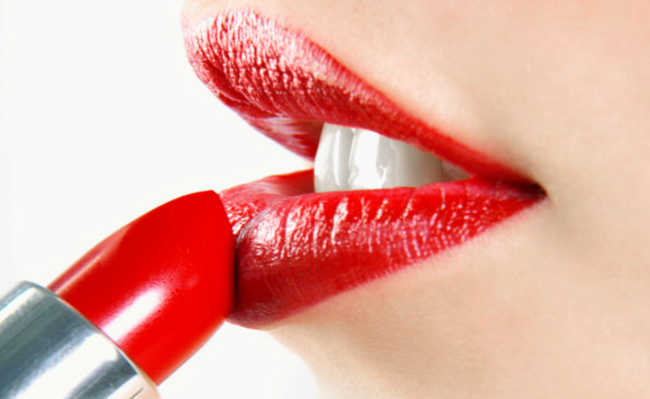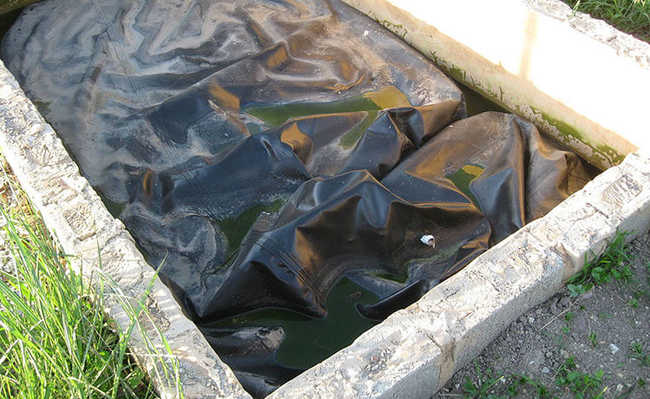Those who use lipstick, shine or lip balm may be slowly ingesting heavy metals
Is it possible that the lipstick applied to the lips is ingested and causes damage to health?

In addition to the colors, the lipsticks provide hydration, sun protection and anti-aging to the lips. They also protect the lip skin against air pollution, as they form a layer that prevents the spread of allergies caused by particles present in the air or transmitted by the hands. It turns out that some of these cosmetics can contain toxic substances, such as heavy metals, and even carcinogenic components. However, this information is not so widespread and, when it comes to the knowledge of users, it is underestimated because such products are normally not ingested, but applied to the skin or hair. But this fact does not exclude risks associated with toxics, contrary to what many people think. With colored or colorless lipsticks, shines and lip balms, the story is different, as these products are applied directly to the lips and end up being ingested in small portions. Those who use lipstick regularly can eat more than two whole lipsticks a year! It's important to stay tuned to the components of the lipstick you wear.
Worry
The risks associated with the use of lip items are related to the toxic exposure patterns present in these products (usually heavy metals). Lipstick is used daily and is reapplied on average 20 times a day, according to a survey. Taking this into account, a study revealed that it is possible to ingest 24 to 87 milligrams of product per day. If we consider an application over the 365 days of the year, this results in the ingestion of more than eight grams of lipstick per year. To give you an idea, a common lipstick package has approximately 3.5 grams of product, and eight grams of lipstick corresponds to more than two whole lipsticks ingested per year.
Like most commercially sold beauty products, lipsticks can contain parabens, fragrances and dyes (learn more here). Other research has revealed even more health problems caused by certain substances present in cosmetics, such as nail polish, lipstick and other makeup items.
Lead
Researchers from the Food and Drug Administration (FDA), the US food and drug regulator, found lead in 400 samples of widely available branded lipsticks. The FDA only regulates lead concentrations present in lipstick dyes, setting a limit of 20 parts per million (ppm) of lead. This FDA regulation is very permissive and goes against studies that point to the non-existence of safe levels of exposure to lead. In Brazil, lead acetate is regulated by the National Health Surveillance Agency (ANVISA) and can only be present in hair dye with a limit of 0.6% containing no more than three ppm of arsenic and one ppm of mercury. In Canada and Europe, lead has been banned.
But “only” identifying lead in the makeup of lipsticks is not the worst part. Lead concentrations were found far above levels identified by previous research. In short, some brands have raised the level of lead in their lipsticks up to ten times, which is why it's so important to check the components of the lipstick you use.
other toxics
Alerts in many media outlets most often focus on the presence of lead in lip products. However, in research conducted by researchers from Environmental Health Perspectives and the Polytechnic Institute of Lisbon, the presence of other heavy metals such as nickel, chromium, aluminum, cadmium, cobalt, copper, manganese and titanium were detected in lip products in general and also in other cosmetic items, such as eye pencils and moisturizers, and even sunscreens. It so happens that these chemical substances listed above are also bad for your health.
Effects
Lead is associated with the occurrence of dementia, depression, agitation, aggression, loss of concentration, IQ deficit, hyperactivity, menstrual cycle dysregulation, premature birth, Alzheimer's, Parkinson's, reduced cognitive abilities, among other disorders and diseases. When ingested, lead's main toxic effects reach the brain and nervous system. High concentrations of lead in the body can cause liver damage, bone damage, reproductive system damage, and increased blood pressure. According to the International Agency for on Cancer (IARC), which regulates the risks of certain products causing cancer, inorganic lead compounds are classified as possibly carcinogenic to humans. The Environmental Protection Agency (EPA), the American environmental agency, classifies lead and its organic compounds as likely carcinogens.
Nickel can be considered the champion of skin allergies. In 2008, the European Union banned nickel in the composition of cosmetics and established strict recommendations for products with this heavy metal that are in prolonged contact with the skin, such as earrings (see here more about the possible problems that combine chemical substances with jewelry can be harmful to health). There are studies that prove allergic dermatitis problems even by the use of cell phones that have the metal in their composition in direct contact with the skin, see here.
Chromium has been banned in cosmetics by the European Union, Canada, Indonesia, Philippines, Thailand, Cambodia, Myanmar and Malaysia. The substance can cause lifelong skin problems such as dermatitis. Cadmium, in turn, is related to kidney, bone and lung problems.
Learn more about the issues surrounding cosmetics in a video produced by The Story of Stuff Project by liking the video.
care and recycling
Avoid buying brands that are associated with the presence of lead and other toxic metals. Look for products free of chemical substances harmful to health (click here to visit our online store and see some options for sustainable and beneficial products for your health and the environment). And keep an eye on labels to avoid contact with other hazardous substances, such as fragrances, dyes and parabens.
In addition to these precautions, it is also important to check the expiration date of these products. When expired, their efficiency decreases and the risks of allergies, irritations and herpes (in the case of lipsticks) increase, since there is a greater chance of oxidation and decomposition of the ingredients present in the formula, including toxic substances. Therefore, if you notice that the lipstick has changed color and it is dry and giving off a different and uncomfortable smell, be aware that these are signs that it is time to dispose of it.
Because some beauty items contain in their formula substances harmful to health, as already mentioned, it is important to dispose of these products properly. Otherwise, they can cause contamination of soil and groundwater, for example. To give your cosmetic product a sustainable end, you can take it to the store where you bought it - some cosmetic companies collect a minimal amount of empty products and, in return, offer the customer a new branded product; and others make it possible for the client to leave the beauty product at post offices (see here how to correctly dispose of expired cosmetics). But before taking them to these places to be recycled, be sure to clean the container first with a damp cloth.
In the case of lipsticks that you no longer like, a tip is to change them into a new lipstick. In that case, take them out of the wrapper and put them in a bowl. Place the bowl on fire in a bain-marie, and stir the lipsticks with a toothpick. When they start to melt, the colors will blend together, forming a new one. Once melted, transfer your new lipstick to a container, wait for it to cool and then just test it. Another option is to exchange with friends or donate to someone.










